By Harry Hall White; from The Magazine ANTIQUES, November 1926.

Much interest centers about the O’ Hara Glass Works of Pittsburgh, in that this was the first of the pioneer glass-houses in the Allegheny region that endured during a period of more than eighty years in the same location. For our information regarding the establishment of these works we are entirely dependent upon writings of early historians, upon diaries, letters, and government reports.
While the records now seem to be quite clear, there has been considerable discussion regarding the earliest established glass-house in Pittsburgh. For the purpose of the collector of American glass, the records, as set forth by Cramer’s Pittsburgh Almanack (Pittsburgh, 1807, Number VII). George H. Thurston’s Allegheny Counties Hundred Years (Pittsburgh, 1888, Chapter XII), and Joseph D. Weeks’ fine Report on the Manufacture of Glass (Report on the manufacturers of the United States at the Tenth Census, June 1, 1880, Chapter XII), will prove satisfactory.

Some of the claims will be briefly discussed without any attempt to prove other priority than that which has been already established.
One report states, on no less authority than that of William McCully, the founder of the William McCully Company, that the first glass-house was located on the west side of the Monongahela River at a place known as “Scotts” – later called “Glass House Riffle” – in 1795. The establishment was said to be a window glass-house of eight pots, fired with wood, and having a capacity of three boxes to a blowing.
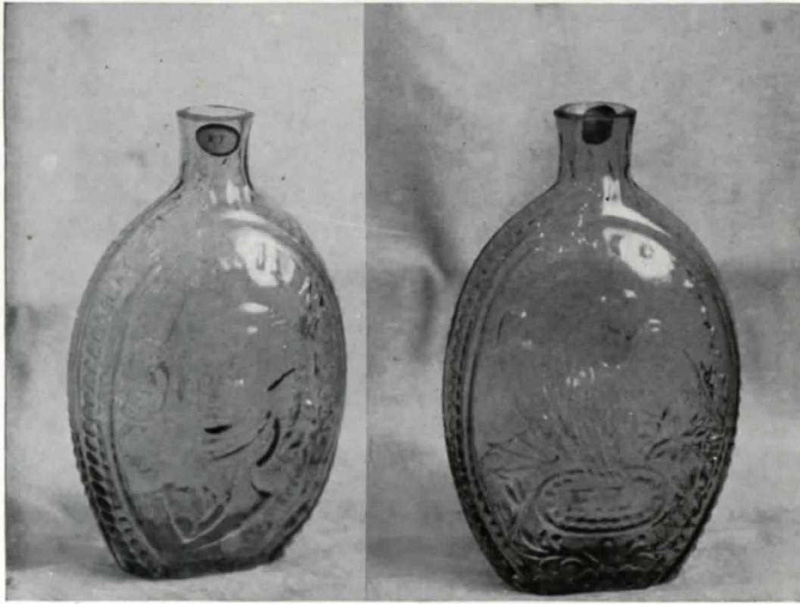
On the other hand, Joseph Eichbaum, grandson of Peter William Eichbaum who built and managed the O’Hara Works, maintained that his grandfather pointed out to him the location of the first glass works on the south side of the Ohio River where the Marine Hospital stood. There are no records to show who built these plants, or under what circumstances they started. There is, however, documentary evidence to the effect that, in 1796, preliminary steps were taken by Colonel James O’Hara and Major Isaac Craig toward the erection of a glass-house in Pittsburgh.

These gentlemen had been in correspondence with Peter William Eichbaum, then superintendent of the glass-house at the falls of the Schuylkill River in Pennsylvania. Eichbaum was considered a master workman in glass.
Born in Germany, he had, at the invitation of Louis XVI, emigrated to France to assist in establishing glass works in Burgundy. Prior to the French Revolution, however, he had come to America, arriving in Philadelphia in 1793.
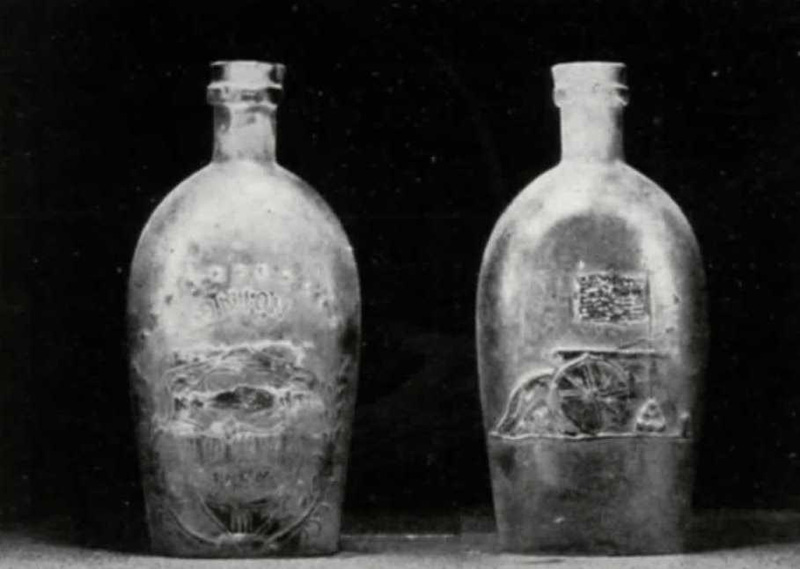
At the time of the negotiations with O’Hara and Craig, Eichbaum was in the employ of Robert Morris and John Nicholson, who had built the glass-house on the Schuylkill about 1786. O’Hara and Craig sent him samples of various sorts of clay for his judgment regarding their value for potmaking. He wrote, “They do not look amiss, with the exception of some roots,” and gave instructions for the digging and ripening of twenty or twenty-five tons’ weight.
FIRST SUCCESSFUL GLASS-HOUSE, 1797
In 1797, the Pittsburgh partners secured Eichbaum’s services and erected the first successful glass-house in Pittsburgh. This pioneer establishment was located on the south side of the Monongahela River, nearly opposite the mouth of the Allegheny. It was a frame building and accommodated an eight-pot furnace.

Besides being the first successful glassmakers in Pittsburgh, O’Hara and Craig deserve the distinction of having been the first, in America, to adopt coal as fuel in glassmaking. It may easily be seen that, at the beginning of the enterprise, there were encountered exasperating delays. Workmen had to be trained, were not uniformly skilful, and, from reports, appear to have been as temperamental as modern artisans. Great difficulties were experienced in securing proper material for glass pots. The clay previously referred to, although it had been judged satisfactory, did not prove so in use, and its substitute had to be brought over the mountains from New Jersey.
In 1798, Eichbaum advertised to pay one shilling per bushel for wood ashes, and a generous price for potash delivered at the glass works opposite Pittsburgh. The concern advertised, in May 1802, “to give $100.00 for the discovery of clay fit for their melting pots if found within one hundred miles of Pittsburg and within ten miles of the Allegheny or Monongahela Rivers.”
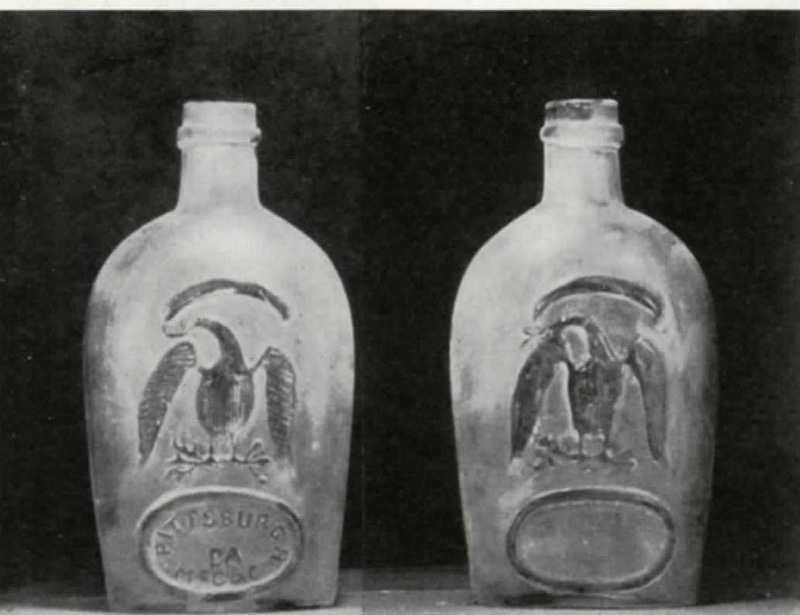
There is the popular, historic memorandum, found among the papers of Colonel O’Hara, to the effect that “to-day we made the first bottle, at a cost of $30,000.00”.
From Pittsburgh, Major Craig wrote to Samuel Hodsen in Philadelphia, under date of August 5, 1803: “With respect to our glass manufacturing, the establishment has been attended with greater expense than we estimated. This has been occasioned partly by expensive buildings necessary erected to accommodate a number of people employed in the manufacture, together with their families, and partly by the ignorance of some people in whose skill of that business we reposed too much confidence. Scarcity of some of the materials at the commencement of the manufacturing was also attended with considerable expense. We have, however, by perseverance and attention, brought the manufacture to comparative perfection. During the last blast, which commenced at the beginning of January and continued six months, we made on the average 30 boxes a week of excellent window-glass, besides bottles and other hallow-ware to the amount of one-third of the value of the window-glass, 8 x 10 selling at $13.50, 8 x 12 at $15.00, and other sizes in proportion.”

Fortesque Cumming, in his Tour to the Western Country, 1807-1809 (Reprint in Arthur H. Clark’s Early Western Travels, Cleveland, 1904, Vol. IV), writes – recording the view as seen from the point where the Allegheny and Monongahela Rivers join to form the Ohio –
Coal Hill…still supplies the coal for General O’Hara’s glass works which, with the houses of the overseer and workmen, forms a village at the foot of the hill on the river bank, immediately opposite the point where the spectator stands. Window-glass of a good quality and quart bottles are made at this manufactory, which, with a rival one at New Geneva about sixty miles up the Monongahela River, supplies all the west country.

EICHBAUM, WENDT AND COMPANY
Soon after the erection of their plant, O’Hara and Craig, while still remaining proprietorship, evidently relinquished active management to an organization of practical glass workers composed of the workmen of the plant. This management was known as Eichbaum, Wendt and Company. In consequence, the following advertisement appeared in the Gazette of June 29, 1800:
The proprietors of the Pittsburgh Glass Works having secured a sufficient number of the most approved European glass manufacturers and having on hand a large stock of the best materials on which the men are now employed, have the pleasure of assuring the public -. Bottles of all kinds and in any quantity may be had together with pocket flasks, pickling jars, apothecary shop furniture or other hallow-ware. James O’Hara or Isaac Craig or the store of Messrs. Prather and Smiley in Market Street, Pittsburgh.
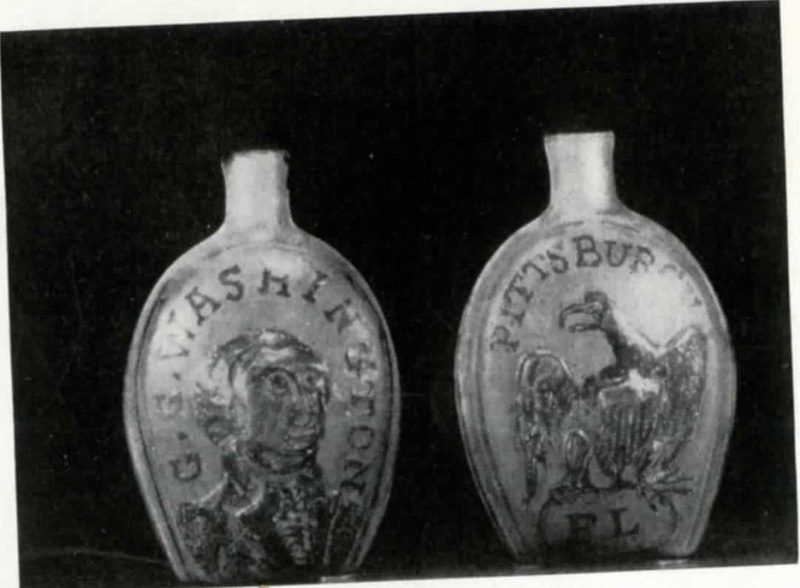
It is said that this organization of workmen was not particularly successful and that they encountered financial difficulties. However, continuance is implied by their quotation of wares in April 1804, which appeared as follows:
Hallow-ware Gallon bottles $4.00 per doz.
Hallow-ware Gallon bottles $2.40 1/2 per doz.
Hallow-ware Quart bottles $1.60 per doz.
Hallow-ware Pint bottles $1.20 per doz.
Hallow-ware Port and Claret 41.35 per doz.
Window Glass 7 x 9 $11.00 per box
Window Glass 8 x 10 $12.00 per box
Window Glass 10 x 12 $13.00 per box
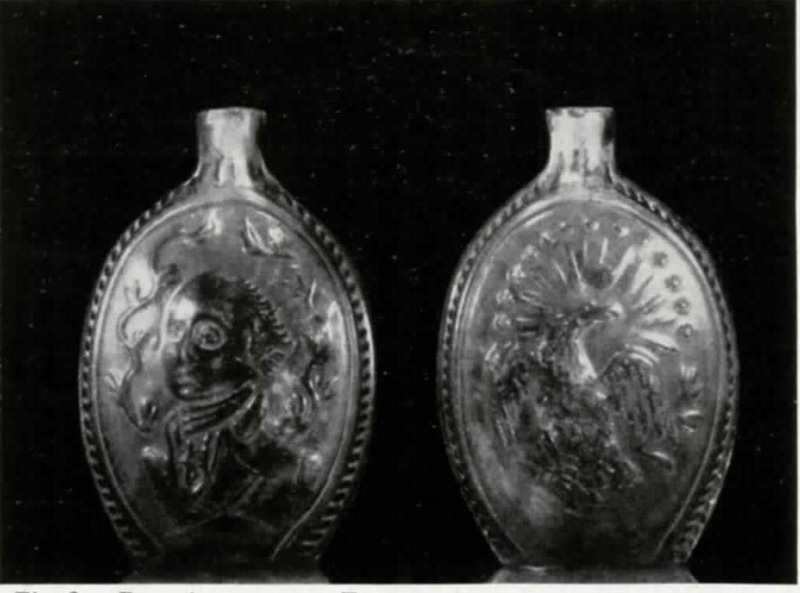
Cramer’s Pittsburgh Almanack for that year records their product as valued at $12,000. This same year Major Craig withdrew. The business, however, was continued; for, in a later issue of the almanac in 1807, the product is reported to consist of window glass, bottles, jars, decanters, tumblers, and blue glass – for all of which a yearly value of $18,000 is given.
THE LORENZ CONTROL
The next definite piece of information regarding this concern is its transfer to different control. It is reported that Colonel O’Hara continued in the management until his death, December 21, 1819. About this time the works were leased by Frederick Rudolph Joacim Lorenz.

Lorenz was a native of Germany, who had come to America in 1809, a lad of fifteen years. We do not know exactly when he reached Pittsburgh; but we are told that he had no previous experience as a glass worker until he learned to blow glass in the O’Hara Works. He was a man of excellent education, quickly recognized the possibilities of the business, and later purchased the O’Hara Works.
Information regarding these works prior to the lease by Lorenz is very meager. It is to be supposed that they were affected by the general business conditions prevailing from year to year. Following 1807 business declined, with short periods of revival, until 1812, when, due to embargoes on foreign manufactures, it rose to a high point from which manufacturing in general again seriously declined in 1820 or 1821. Our lack of specific data is particularly unfortunate since it was in the early eighteen hundreds that the decorated pocket flask first became popular.
TREVOR AND ENSELL BOUGHT BY LORENZ
A glass-house had been established, in 1812, by Trevor and Ensell on the south side of the Monongahela River, nearly opposite Wood Street in Pittsburgh. No doubt influenced by the bad depression, this concern discontinued business in 1819. Lorenz secured this plant in addition to the O’Hara Works.

A THIRD LORENZ PLANT
His subsequent operations with these two plants are reported to have been very extensive. Indications of prosperity appear in the building of a new glass-house in 1824, which was named the Sligo Works. This was for the manufacture of window glass. The following is an estimate of the Lorenz product for the year 1825:
Window glass 7500 boxes $31,000.00
Porter bottles 160 gross $1,440.00
Hallow-ware 3160 doz. $4,424.00
Total: $36,864.00
These prices are reported to be 25% lower than those of the eastern market at the time.
ADVENT OF WILLIAM McCULLY
This new plant and the two old plants Lorenz operated alone until 1838. In this year, or shortly afterwards, the fortunes of Lorenz were merged with those of another man, William McCully, who was later to become one of the most prominent figures in the glass industry of Pittsburgh.
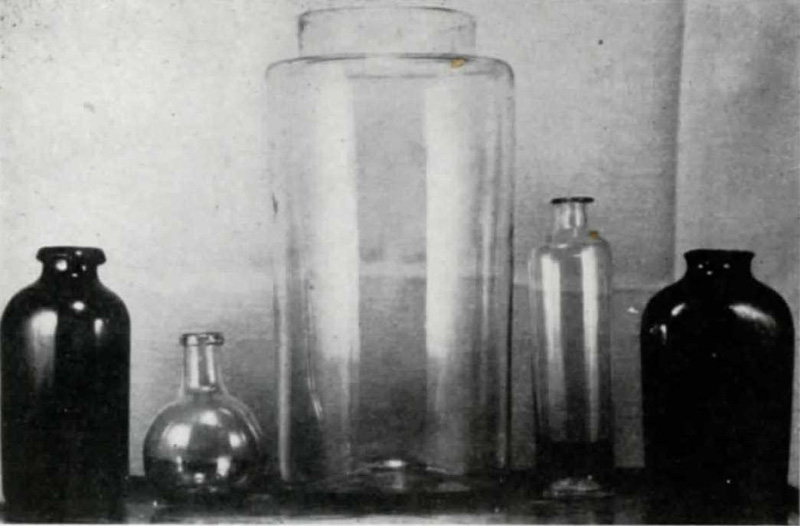
McCully came to Pittsburgh as a young man, and there he learned his trade. He blew flint glass at the Bakewell’s Glass-house when it was located on the site of the present Baltimore & Ohio station. He learned to blow window glass at the O’Hara Works under the management of Frederick Lorenz. In company with Captain John Hay, McCully erected the Union Flint Glass Works at the foot of the Nineteenth and Railroad Streets about 1830. This plant operated for two years, or until the disastrous flood of 1832, when McCully withdrew.
THE PHOENIX GLASS WORKS, 1833
This brings us to a really important date, and one very frequently referred to – the establishing of the Phoenix Glass Works, which occurred in 1833. The Phoenix Works, built for the exclusive manufacture of bottles – green and black bottles only – are often mentioned as the first of this kind of west of the Allegheny Mountains. They were located at Sixteenth and Liberty Streets.
LORENZ AND McCULLY MERGER, 1840
McCully had also been a partner with William Ihmsen in a window glass-house at Monongahela City, which had been established in 1834. This partnership continued until the death of Ihmsen in 1840, when occurred the consolidation which included the original O’Hara-Craig Works. Frederick Lorenz, William McCully, and A. W. Buchanan were the partners – Thomas Wightman joined two years later. The firm was styled the William McCully Company and operated the following works: the old O’Hara-Craig Works, then known as the Pittsburgh Glass Works, the Sligo Works, and the Phoenix Glass Works. Both window-glass and hallow-ware were made in these plants –with the exception of the Phoenix Works, which, as we have said, was devoted exclusively to the producing of bottles.
SEPARATION, 1851
The partnership of McCully, Lorenz, and Buchanan lasted about ten years; a separation occurred in 1851. McCully then withdrew, and purchased the Sligo Works, which had been built by Lorenz in 1824. These were housed in a stone building which McCully soon rebuilt, replacing the stone with brick, and thereby constructing the first brick glass-house in Pittsburgh. McCully was soon joined by his son and sons-in-law in the business, which continued for many years as William McCully and Company.
LORENZ AND WIGHTMAN
At the dissolution of partnership in 1851 Messrs. Lorenz and Wightman retained the old Pittsburgh Works and the Phoenix Works, which they operated under the firm name of Lorenz and Wightman. The partnership continued until the death of Lorenz in 1854, when Wightman retired, after which the business was carried on by Frederick R. Lorenz, Jr. The firm name retained the same, though the glass-house itself is found to be recorded as the Penn Glass Works.
FAHNESTOCK, ALBREE AND COMPANY
Resumption of Lorenz and Wightman
In 1860 the Penn Glass Works were leased to Fahnestock, Albree and Company who were in business for two years only, and concerning whom little or no information is obtainable. In 1863, Thomas Wightman again became interested in the affairs of the concern in association with Moses A. Lorenz and Alexander W. K. Nimick. This group re-established the firm name of Lorenz and Wightman and continued until the death of Lorenz in 1871. At this time the firm name was changed to that of Thomas Wightman and Company, and so remained until 1883.As has been shown by the foregoing account, during a period of eighty-six years one site of land, at the south end of the Point Bridge, was continuously occupied by a glass-house, the products of which, for the major part of the period, are of interest to the collector.
PITTSBURGH PRODUCTS
It is doubtful that the proprietors of these pioneer works had in mind the manufacture of any specific articles when their enterprise was promoted. Probably they rather planned to take full advantage of the glassblowers’ skill and to produce a comprehensive line of hallow-ware and window glass – merchandise very acceptable on the frontier of which Pittsburgh was then the gateway.
This was the logical program for a new glass-house and the one likely to give the quickest and greatest return on the investment which, as we have seen, was considerable. In such procedure every blast could be blown; the best metal in window glass while the less fortunate in color and freedom from “seeds” would go for hallow-ware.
This hallow-ware in itself includes a great variety of articles. It consisted of the calabash type bottles and offhand flasks, or pocket bottles – plain and in the variety of patterns current at that time; decanters, a variation of the calabash bottle, with the accompanying sets of blown glasses or tumblers; snuff and drug jars; milk pans, deep and shallow, plain and patterned, were made there. A few types of Pittsburgh bottles and jars are shown in Figures 2, 3, 4, and 5. These specimens were probably turned out in as many different glass-houses, and definite statements as to their actual source cannot be made, for they are all “off hand blown” and, of course, unmarked. The shapes may vary slightly – one may possibly be more twisted or slightly flatter than another – but the operations of making were the same in all early glass-houses and the products were very difficult to tell one for the other, particularly in a locality where workmen were liable to travel about. The shapes pictured were popular for generations, and seem to have been made by many glass-houses at their start, as has been shown by excavations made by the writer at the sites of other glass-houses situated further to the westward and founded twenty years later than the Pittsburgh plants.
THREE-MOLD GLASS
At just what year the three-mold blown decanters were first made in Pittsburgh, there is no definite record; but it is safe to state that communication with eastern manufacturers was sufficiently close to allow the making of three-,old pieces in Pittsburgh shortly after their eastern production, say 1815 or 1820. I am confident that this will be proven by subsequent investigation.
MOLD BLOWN FLASKS BY LORENZ
While we have no three mold blown pieces that may surely be attributed to the Pittsburgh Glass Works, we have mold blown flasks that were made by one of the early proprietors of these works, and are definitely identified by his initials. This proprietor is Frederick Lorenz, who purchased the original works in 1819. There are two types of flasks thus initialed: one with the edges reeded horizontally, and one with a single vertical rib (Figs. 6, 7). It is safe to attribute to this maker the unmarked specimens of similar design which occur frequently in the locality (Fig. 8). It was not an uncommon practice for the proprietors of the early glass-houses to record their initials on glass flasks made at Coventry, Keene, and Kensington.
The similarity of the Pittsburgh flasks to some that are known to have been made at Kensington may be accounted for as follows: It is doubtful that these early factories had their own moldmakers in starting. Instead they purchased molds that were popular at the time, but had them marked with a personal or a factory name. It seems probable that the majority of these molds was made in Philadelphia. At one time the Philadelphia Directory gave a list of a half dozen or more moldmakers.
WILLIAM McCULLY AND COMPANY FLASKS
The next flasks that were made by this glass-house and its affiliations – of whose identity we are certain – are those by William McCully (Fig. 9). These were not made in the old O’Hara-Craig Works, but in McCully’s new bottle house, the Phoenix Glass Works. McCully also made many flasks from similar molds without his company name. These flasks, blown in aquamarine, amber, brown, and olive amber are found in the three sizes – quart, pint, and half pint.
LORENZ AND WIGHTMAN FLASKS
After the dissolution of 1851, Lorenz and Wightman operated the old O’Hara-Craig Works and the Phoenix Works. We have flasks from their molds plainly marked with their initials. These are from that long series of Union flasks with the clasped hands on the observe, and the flying eagle on the reverse. It is interesting to note, in connection with these designs, that similar devices were used on the coins and tokens of the period, particularly the flying eagle on the one-cent piece of our national currency. These Union flasks occur in aquamarine, amber, and brown, again being made in the three sizes – quart, pint, and half pint. The marking of this series is found on the bottom of the flask (Fig. 10).
FAHNESTOCK, ALBREE AND COMPANY FLASKS
When the works were leased to Fahnestock, Albree and Company in 1860, a new reverse decoration appeared on the flasks, which was quite in keeping with the spirit of the times. This new concern gave us well marked specimens, the initials of the company being engraved in the oval on the obverse F A & Co. Following the precedent of Lorenz and Wightman, they made the three sizes; and, while only the aquamarine glass flasks have been found by the writer; it is only fair to assume that the other colors as well were made. Though Fahnestock, Albree and Company operated the works, for a short period only, their flasks were well-known, and numerous specimens exist (Figs. 11, 12).
Operation of the glass-houses was resumed in the hands of Lorenz and Wightman, who again gave the collector many well-marked pieces. They were very consistent in this matter of marking their wares; we even find preserve jars marked with their initials in script on the sides.
The identification of a few specimens as products of these Pittsburgh glass-houses offers only the beginning of a study. Many new varieties, identifiable beyond reasonable doubt, will be found. Much fresh material as to the history of the different glass-houses and the men who operated them will be revealed. All that I have attempted to do here is to establish a reasonably safe starting point for further investigation.
POSTSCRIPT
As I review these notes now, perhaps, too far advanced toward printing to admit of material revision, I am minded to enter a caveat or two. First, no doubt, I should call attention to the fact that the flask pictured in Figure 8, is attributed to Lorenz, solely by virtue of its general resemblance to known examples of that manufacturer’s product, and not on the basis of any maker’s mark or similar indubitable evidence. I am, in fact, increasingly doubtful of the correctness of this attribution, as I shall at some future time have opportunity to observe more fully and convincingly. Again, I have, throughout, used the familiar term three-mold glass, instead of the more awkward, yet technically more acceptable, three-part-mold glass. The omission of part, or as some call it, section, constitutes in my opinion, an entirely justifiable ellipsis since it makes for brevity, and, where the reader is, even in slightest measure, acquainted with the processes of glass-manufacture, offers no real ground for misunderstanding. (H.H.W.)
